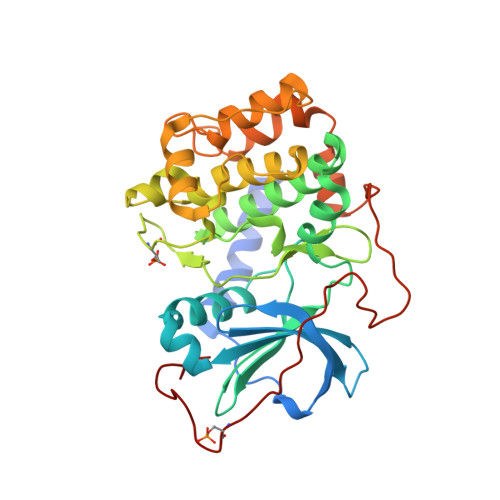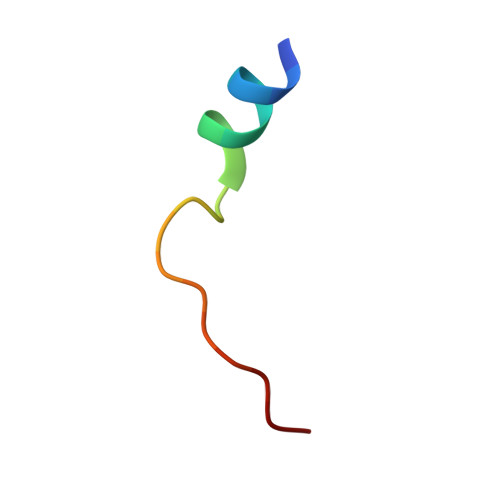At13148 is a Novel, Oral Multi-Agc Kinase Inhibitor with Potent Pharmacodynamic and Antitumor Activity.
Yap, T.A., Walton, M.I., Grimshaw, K.M., Te Poele, R.H., Eve, P.D., Valenti, M.R., De Haven Brandon, A.K., Martins, V., Zetterlund, A., Heaton, S.P., Heinzmann, K., Jones, P.S., Feltell, R.E., Reule, M., Woodhead, S.J., Davies, T.G., Lyons, J.F., Raynaud, F.I., Eccles, S.A., Workman, P., Thompson, N.T., Garrett, M.D.(2012) Clin Cancer Res 18: 3912
- PubMed: 22781553
- DOI: https://doi.org/10.1158/1078-0432.CCR-11-3313
- Primary Citation of Related Structures:
4AXA - PubMed Abstract:
Deregulated phosphatidylinositol 3-kinase pathway signaling through AGC kinases including AKT, p70S6 kinase, PKA, SGK and Rho kinase is a key driver of multiple cancers. The simultaneous inhibition of multiple AGC kinases may increase antitumor activity and minimize clinical resistance compared with a single pathway component. We investigated the detailed pharmacology and antitumor activity of the novel clinical drug candidate AT13148, an oral ATP-competitive multi-AGC kinase inhibitor. Gene expression microarray studies were undertaken to characterize the molecular mechanisms of action of AT13148. AT13148 caused substantial blockade of AKT, p70S6K, PKA, ROCK, and SGK substrate phosphorylation and induced apoptosis in a concentration and time-dependent manner in cancer cells with clinically relevant genetic defects in vitro and in vivo. Antitumor efficacy in HER2-positive, PIK3CA-mutant BT474 breast, PTEN-deficient PC3 human prostate cancer, and PTEN-deficient MES-SA uterine tumor xenografts was shown. We show for the first time that induction of AKT phosphorylation at serine 473 by AT13148, as reported for other ATP-competitive inhibitors of AKT, is not a therapeutically relevant reactivation step. Gene expression studies showed that AT13148 has a predominant effect on apoptosis genes, whereas the selective AKT inhibitor CCT128930 modulates cell-cycle genes. Induction of upstream regulators including IRS2 and PIK3IP1 as a result of compensatory feedback loops was observed. The clinical candidate AT13148 is a novel oral multi-AGC kinase inhibitor with potent pharmacodynamic and antitumor activity, which shows a distinct mechanism of action from other AKT inhibitors. AT13148 will now be assessed in a first-in-human phase I trial.
Organizational Affiliation:
Cancer Research UK Cancer Therapeutics Unit, Division of Cancer Therapeutics, The Institute of Cancer Research, Sutton, United Kingdom.


















